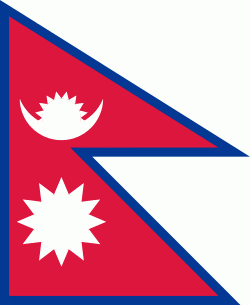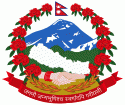Dhangadhi (Dhangaḍhi̇̄)
Dhangadhi (धनगढी) is a sub-metropolitan city and the district headquarters of Kailali District in Sudurpashchim Province of Nepal.Dhangadhi is also the capital of Sudurpashchim Province. It shares a border with Uttar Pradesh, India in the south, Godawari and Gauriganga Municipality in the North, Kailari Rural Municipality in the east and Kanchanpur District in the west. Dhangadhi is a sub-metropolis divided into 19 wards. It has a population of about 147,181 and thus is the 10th biggest city of Nepal. It has an area of 261.75 km2. It is one of the major cities of Far - West Province of Nepal along with Mahendranagar.
Dhangadhi was established in 1976. It became the first sub-metropolitan city in the far-west after it was upgraded to a sub-metropolis from municipality status on 18 September 2015 as the village development committees Fulbari and Urma were merged into Dhangadhi. There is a fable. Rana Tharu of Dhangadhi used to bury their wealth in the ground due to the fear of robbers. That is why the name of Dhangadhi remained Dhangadhi.
Dhangadhi was established in 1976. It became the first sub-metropolitan city in the far-west after it was upgraded to a sub-metropolis from municipality status on 18 September 2015 as the village development committees Fulbari and Urma were merged into Dhangadhi. There is a fable. Rana Tharu of Dhangadhi used to bury their wealth in the ground due to the fear of robbers. That is why the name of Dhangadhi remained Dhangadhi.
Map - Dhangadhi (Dhangaḍhi̇̄)
Map
Country - Nepal
 |
 |
| Flag of Nepal | |
The name "Nepal" is first recorded in texts from the Vedic period of the Indian subcontinent, the era in ancient Nepal when Hinduism was founded, the predominant religion of the country. In the middle of the first millennium BC, Gautama Buddha, the founder of Buddhism, was born in Lumbini in southern Nepal. Parts of northern Nepal were intertwined with the culture of Tibet. The centrally located Kathmandu Valley is intertwined with the culture of Indo-Aryans, and was the seat of the prosperous Newar confederacy known as Nepal Mandala. The Himalayan branch of the ancient Silk Road was dominated by the valley's traders. The cosmopolitan region developed distinct traditional art and architecture. By the 18th century, the Gorkha Kingdom achieved the unification of Nepal. The Shah dynasty established the Kingdom of Nepal and later formed an alliance with the British Empire, under its Rana dynasty of premiers. The country was never colonised but served as a buffer state between Imperial China and British India. Parliamentary democracy was introduced in 1951 but was twice suspended by Nepalese monarchs, in 1960 and 2005. The Nepalese Civil War in the 1990s and early 2000s resulted in the establishment of a secular republic in 2008, ending the world's last Hindu monarchy.
Currency / Language
| ISO | Currency | Symbol | Significant figures |
|---|---|---|---|
| NPR | Nepalese rupee | ₨ | 2 |
| ISO | Language |
|---|---|
| EN | English language |
| NE | Nepali language |















